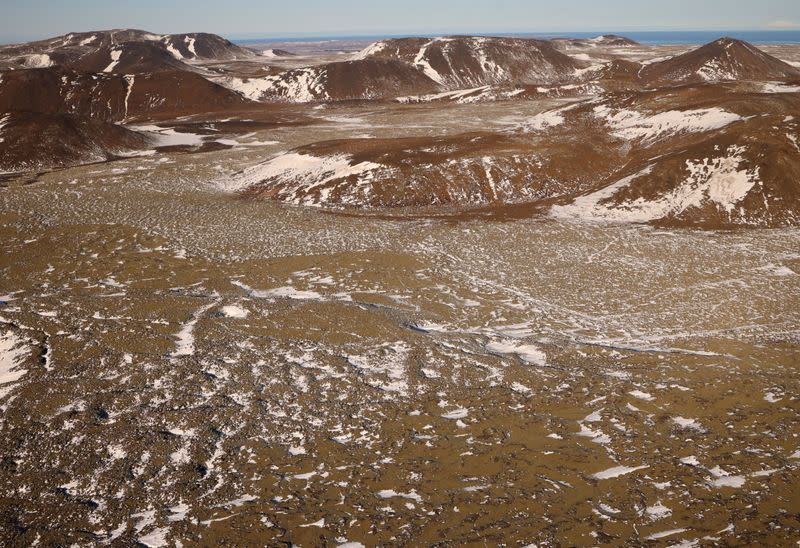By Nikolaj Skydsgaard and Jacob Gronholt-Pedersen
COPENHAGEN (Reuters) – Icelanders crave peaceful sleep after the tremors of tens of thousands of earthquakes have shaken their sleep for weeks in what scientists call an unprecedented seismic event, which could very well end in a spectacular volcanic eruption.
“At the moment, we are feeling this constantly. It is as if you are walking on a fragile suspension bridge,” Rannveig Gudmundsdottir, a long-time resident of the city of Grindavik, told Reuters.
Grindavik is in the southern part of the Reykjanes Peninsula, a volcanic and seismic hot spot, where more than 40,000 earthquakes have occurred since February 24, exceeding the total number of earthquakes recorded there last year.
Located between the tectonic plates of Eurasia and North America, Iceland frequently experiences earthquakes as the plates slowly wander in opposite directions at a rate of about 2 centimeters a year.
The source of the earthquakes of the past few weeks is a large body of molten rock, known as magma, moving about a kilometer (0.6 miles) below the peninsula as it tries to make its way to the surface.
“We have never seen so much seismic activity,” Sara Barsotti, coordinator of volcanic hazards at the Icelandic Meteorological Office (IMO), told Reuters.
Some of these earthquakes have reached magnitudes of up to 5.7.
“Everyone here is very tired,” said Gudmundsdottir, a fifth-grade teacher. “When I go to bed at night, I just think: am I going to sleep tonight?”
Many in Grindavik visited relatives, spent time in summer houses or even rented a hotel room in Reykjavik, the capital, just to get a break and a good night’s sleep.
Icelandic officials warned of an imminent volcanic eruption on the peninsula in early March, but said they did not expect it to disrupt international air traffic or damage critical infrastructure nearby.
Unlike the Eyjafjallajökull volcano eruption in 2010, which disrupted some 900,000 flights and expelled hundreds of Icelanders from their homes, the eruption on the peninsula is unlikely to send much ash or smoke into the atmosphere.
Experts expect the lava to come out of cracks in the soil, possibly resulting in spectacular lava sources, which can stretch 20 to 100 meters in the air.
Last year, the authorities implemented an emergency plan for Grindavik. One option includes placing residents on boats in the North Atlantic, in the event that an eruption closes roads to the remote city.
“I trust the authorities to keep us informed and evacuate us,” said Gudmundsdottir. “I’m not scared, just tired.”
(Reporting by Nikolaj Skydsgaard and Jacob Gronholt-Pedersen; Editing by Emelia Sithole-Matarise)
